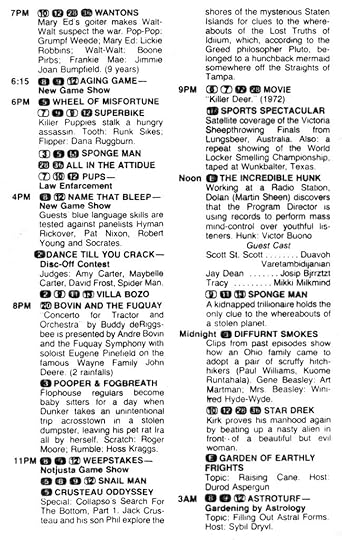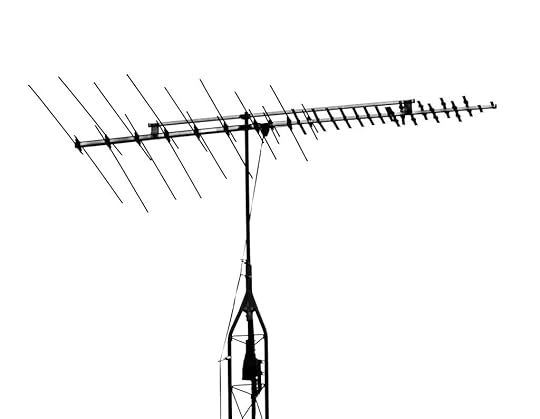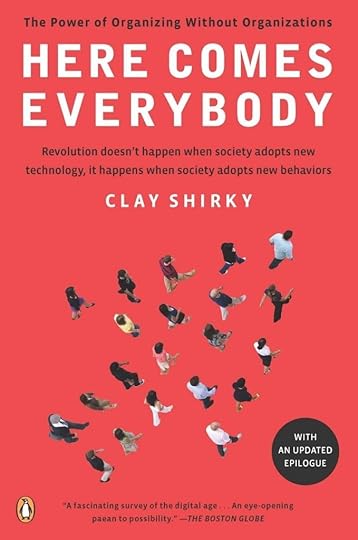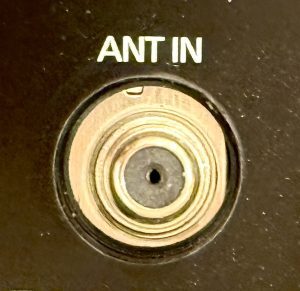The Offing of What’s On
 Parody of a page from TV Guide, circa 1978
Parody of a page from TV Guide, circa 1978For the final seven decades of the last millennium, most people in the developed world scheduled their evenings by answering a simple question: What’s on? For the first two of those decades, the question was “What’s on the radio?” For the next five, it was “What’s on TV?”
Guidance toward answers were provided on newspaper pages covering entertainment, and in weekly magazines. The biggest of those was TV Giude, at its peak the most popular magazine in the U.S. *with 20 million customers, plus some multiple of pass-along readers.
In the guide were stations (such as those above), which belonged to networks. The biggest of those—CBS, NBC, and ABC—migrated over from radio. PBS and Fox came later.
To get TV stations, you needed an antenna. Rabbit ears worked if you had strong signals, but the picture looked best only if you had a roof antenna. The best of those looked like the skeleton of a 10-foot tuna on a spike:
 A dead TV antenna I spotted recently in Oden, Indiana. The flat feed line says it dates from the 1970s or earlier. The tower was next to a house, and the antenna was about 40 feet above the ground. Back in the Analog Age, it probably got stations from Indianapolis, Louisville, Evansville, Terra Haute, and maybe even St. Louis. Here in the Digital Age, it would get a handful of signals from stations within about 50 miles, but nothing from the bigger markets.
A dead TV antenna I spotted recently in Oden, Indiana. The flat feed line says it dates from the 1970s or earlier. The tower was next to a house, and the antenna was about 40 feet above the ground. Back in the Analog Age, it probably got stations from Indianapolis, Louisville, Evansville, Terra Haute, and maybe even St. Louis. Here in the Digital Age, it would get a handful of signals from stations within about 50 miles, but nothing from the bigger markets.In rural areas, you needed a big one, ideally high above the ground, on a tower of its own or strapped to a chimney, with a rotator so you could spin it around. The one I used in Chapel Hill, back in the ’70s and early ’80s, could get every station within two hundred miles. I got channel 7s from Washington, NC, and Roanoke, VA. On channel 3, I got Charlotte and Wilmington, both in NC.
Cable began as CATV—Community Antenna Television. When I lived in far northern New Jersey in the early ’70s, we were shadowed by terrain from New York City and Philadelphia signals, but our CATV provider gave us the 12 VHF channels of both cities. Gradually, cable companies added lots of channels that were cable-only. That gave folks a lot more answers to “What’s On?” and kept that era going.
But that era is mostly over, because optionality vergest on absolute. This happened because, as Clay Shirky put it,
 Now you can produce a show on your phone almost as easily as you consume one on a TV. You can share it with the world on YouTube, Vimeo, your blog, or wherever. This is why there are more than fourteen billion videos on YouTube alone. There are also four and a half million podcasts, and countless millions of musical selections available over streaming services. Against all of this, broadcast radio and TV are dead technologies walking.
Now you can produce a show on your phone almost as easily as you consume one on a TV. You can share it with the world on YouTube, Vimeo, your blog, or wherever. This is why there are more than fourteen billion videos on YouTube alone. There are also four and a half million podcasts, and countless millions of musical selections available over streaming services. Against all of this, broadcast radio and TV are dead technologies walking.Interesting fact: What makes a TV a TV is its antenna connection:

Without that and the tuner inside, it’s just a monitor.
So let’s compare:

And that bottom line is where we’re at. “What’s on?” has become an archaic expression, like “prithee” and “forsooth.”
And we’re changed by that. As Marshall McLuhan is said to have said (yes, he meant it, but didn’t say it—see that last link), we shape our tools, and then our tools shape us.
So, what’s our shape now? Are we becoming phono sapiens?
I think it’s more like… where are we now?
Clearly, we are in a state of massive optionality, but the mass itself is not optimized, and won’t be until we get much better control over our lives, and our personal data, than we have now.
For that we need personal AI. We don’t have it yet. Not the collective we, including all the Muggles.
The wizards are having fun with MCP, for example. Just learned oday about BrowserMCP. I’m eager to get going on KwaaiNet.
Anyway, it’s important to note in passing that What’s On is mostly Off.
Doc Searls's Blog
- Doc Searls's profile
- 11 followers



